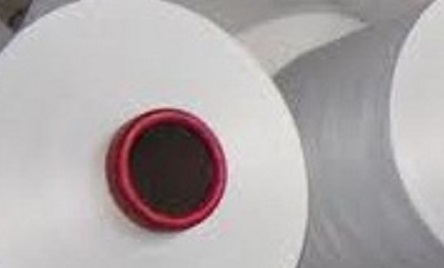Polyester downstream market pessimistic - Arhive
Polyester downstream market largely pessimistic, requiring time to improve Polyester downstream market pessimistic
Source : CCFGroup

After investigating major fabric manufacturing bases like Shengze, Changxing, Xiaoshan, Shaoxing and Haining, the results and feelings are as following, only for reference:
- Different from previous investigations, many twisting units and fabric manufacturing plants were busy in visiting their downstream customers recently, which reflected that many downstream players tried to receive some orders by visiting customers or turned to focus on collecting the payment with falling prosperity.
- Currently, most downstream twisting units and fabric manufacturing plants lacked confidence, showing strong sidelined attitude, which is similar to the situation in Sep-Oct, 2018. On one hand, new orders apparently declined in Apr and players focused on completing orders placed in Mar, which was because partial demand was pulled forward as the VAT would be cut from Apr 1. Some plants even did not get orders in Apr, and orders in May were scarce too. Inquiries appeared, but actual transactions were limited. Twisting units and fabric manufacturing plants saw poor orders, stagnated sales and rising stocks in Apr-May; on the other hand, with decreasing feedstock price, the feedstock prepared before was devaluated, and the stocks of finished goods also devaluated. Thus, downstream plants tried to reduce feedstock inventory as low as possible, better to only meet the pressing demand.
- Stocks of grey fabric have beat high in recent years, and some plants successively slashed run rate after the May Day holiday to reduce the devaluation risk from stocks accumulation. The decrement of circular knitting O/R was the most apparent. The O/R of circular knitting plants in Shaoxing declined to around 30-40% now from 75% in Mar, and that of warp knitting plants in Haining and Changshu and water-jet plants in Changxing and Wujiang also slipped by around 10-20%. In short run, operating rate of downstream plants may keep dropping with decreasing upstream feedstock market and hard-to-improve demand.
- Dyeing plans also witnessed poor business when dyestuff price surged. Some dyeing plants in Xiaoshan and Haining mainly manufacturing knitwear revised down dyeing fee amid subdued orders. Besides, dyeing plants in Wujiang and Shengze also reflected that the order schedule has been greatly shortened.Polyester downstream market pessimistic
- As for Sino-US trade conflict, after U.S. Customs and Border Protection stated officially that US will raise tariffs on $200 billion worth of Chinese imports from 10 percent to 25 percent from May 10, 2019, downstream fabric manufacturing plants that directly exported textiles to US were affected. Some customers reflected that new orders have been suspended and the two sides need to negotiate the allocation of tariffs in later period. US is expected to be hard to find a nation that can produce textiles as large-scale as China, especially downstream fabric manufacturing plants related with chemical fiber. After all, China remains the biggest chemical fiber producer and fabric manufacturer in the world. Thus, orders from US still have chance to be placed or to be placed through transit country after negotiation in later period. Besides, the US threatened to impose tariffs on Chinese products worth about US$300 billion, saying that it will hold a hearing on June 17, and the $300 billion list contains the remaining home textiles and clothing for export. If this part is subject to tariff raise, it will have a greater impact on China’s textile and apparel exports in short term. After all, the United States is China’s largest textile and apparel export market.
- Operating rate of downstream twisting units and fabric manufacturing plants declined further, and downstream plants only purchased feedstock on a need-to-basis, resulting into mounting stocks in upstream polyester plants. Actually, many polyester plants suffered losses now amid price competition, especially FDY. Devaluation of stocks was obvious. Thus, some polyester plants have arranged production curtailment since May, and the polymerization rate is supposed to fall further. Polyester downstream market pessimistic
- Currently, pessimistic view was widely spread, but we also perceived some bullish factor. Firstly, downstream orders were largely sluggish in Apr-May, but some large plants witnessed moderate orders, and some orders were in the hand of traders. If feedstock market ends falling and rallies, these orders may emerge. Secondly, feedstock prepared in downstream plants was slanting low, worrying feedstock price to decline further, but speculative demand for low-priced feedstock may be stimulated if PTA spread narrows to reasonable level, polyester plants increase output reduction and PFY price has smaller downward risk.
All in all, pessimistic mindset is supposed to sustain in short run with poor business in downstream market. Polyester plants may continue slashing price and curtailing production together. PTA-PX spread is likely to narrow amid the reduction of polymerization rate.Polyester downstream market pessimistic
But pessimistic view should not be held in long run. After bearish factors gradually diluted, downstream plants are still likely to restock when the time is appropriate, while the specific time is not confirmed now, maybe in Jun? Demand is supposed to be constrained this year, so the rebounding range may be limited.
